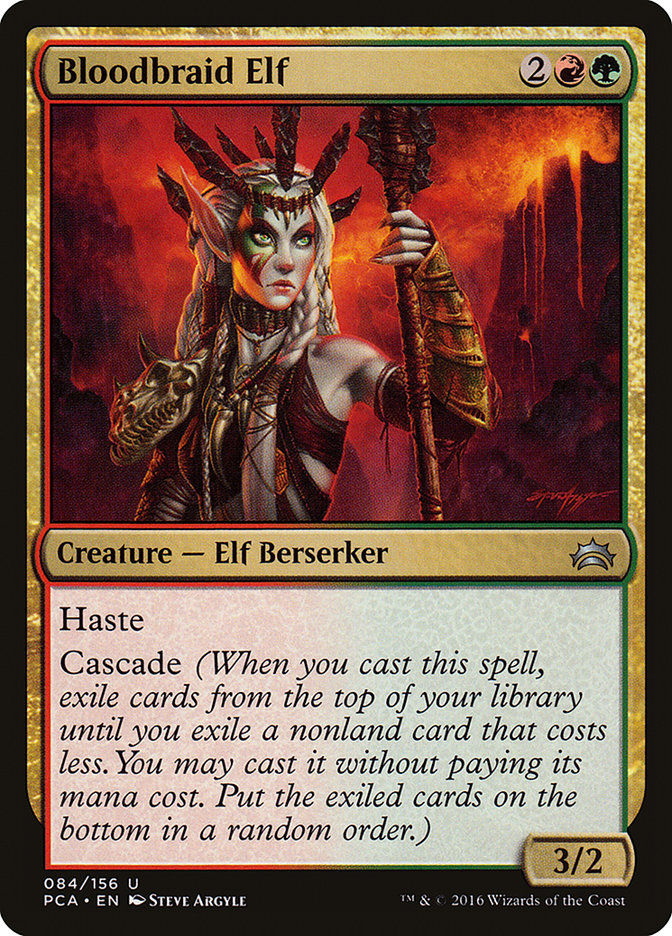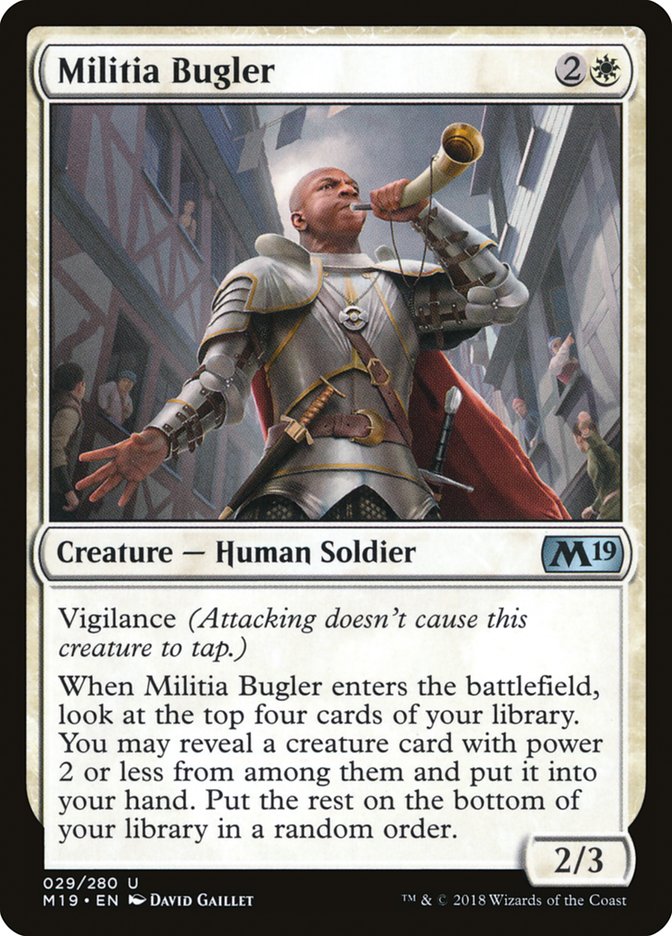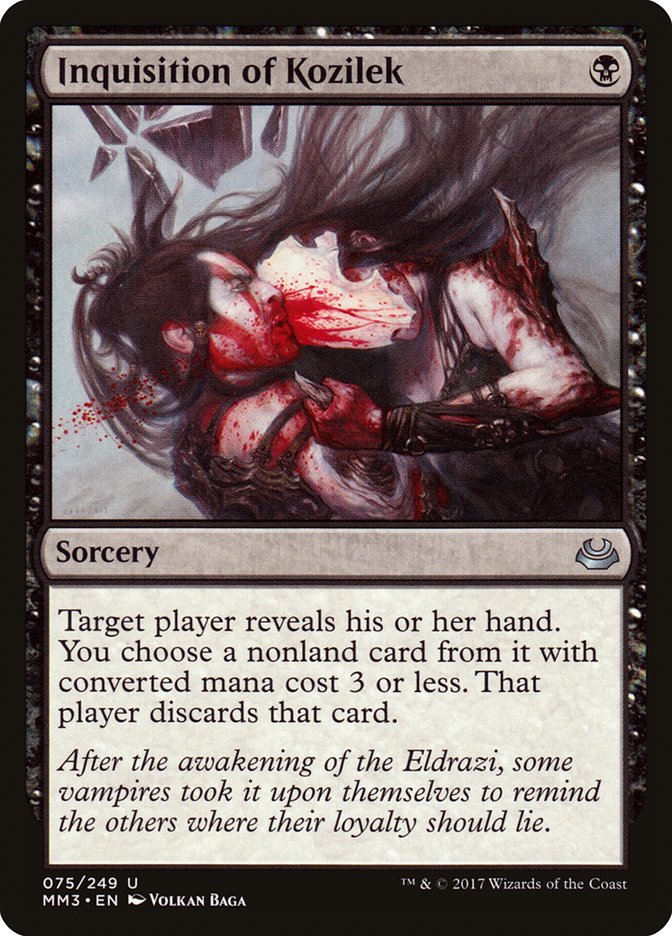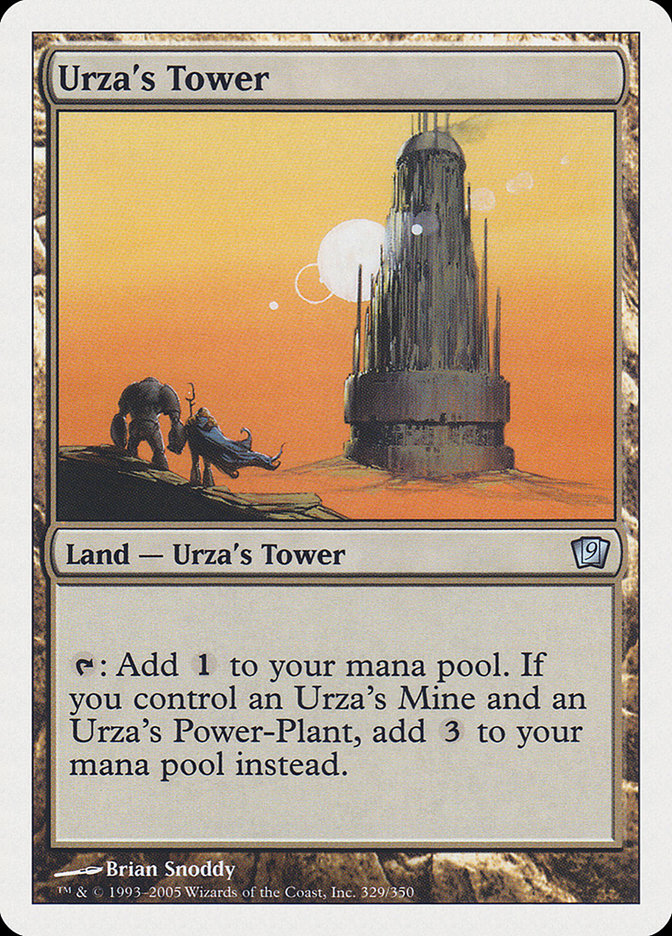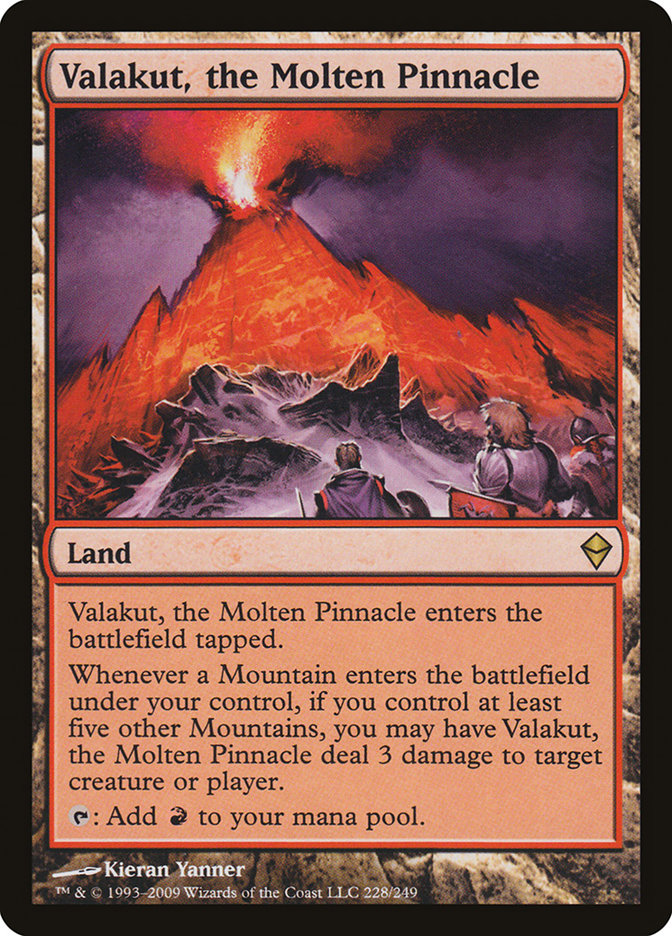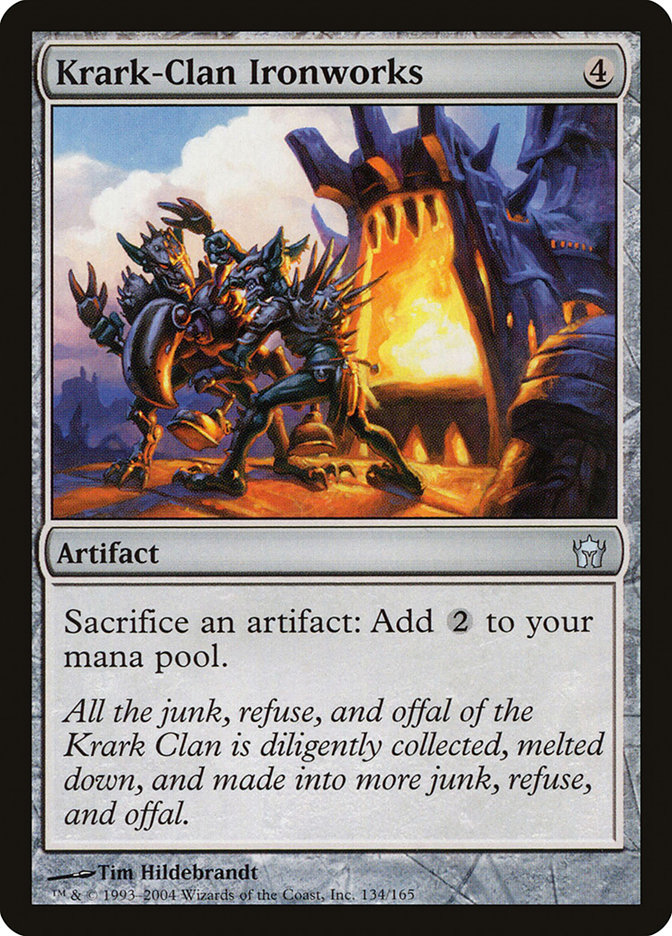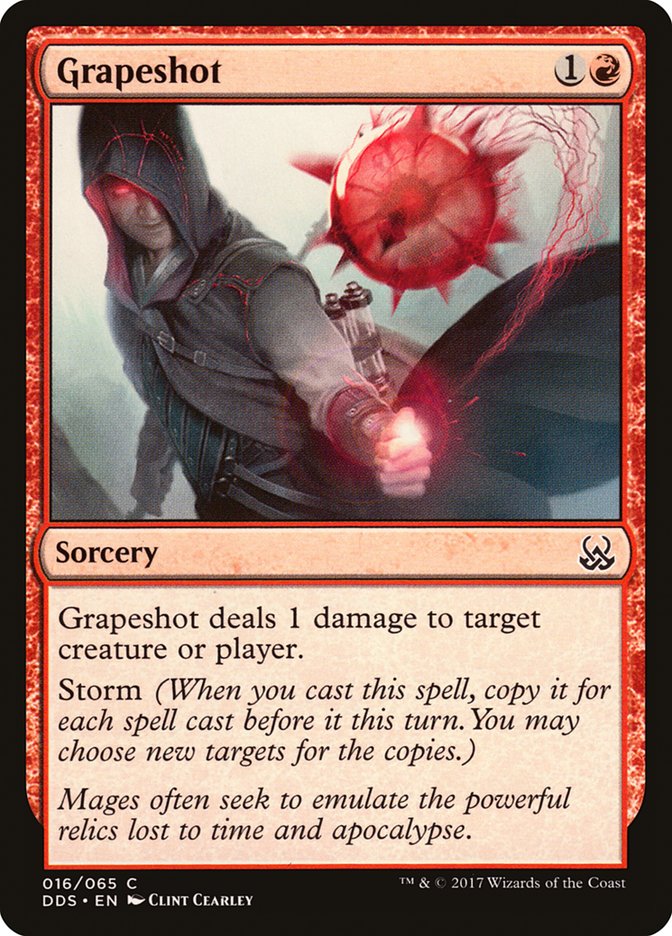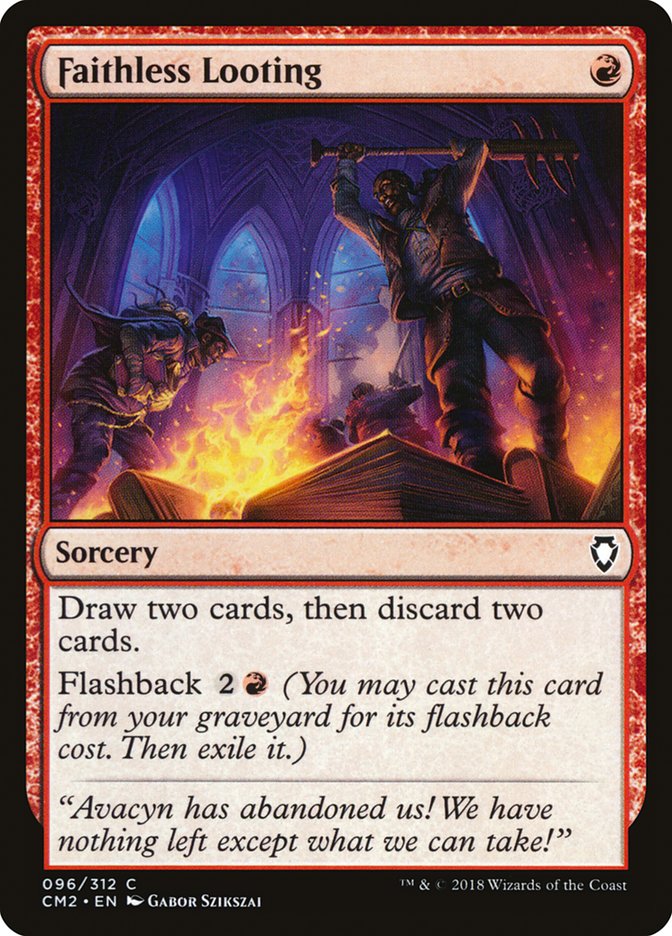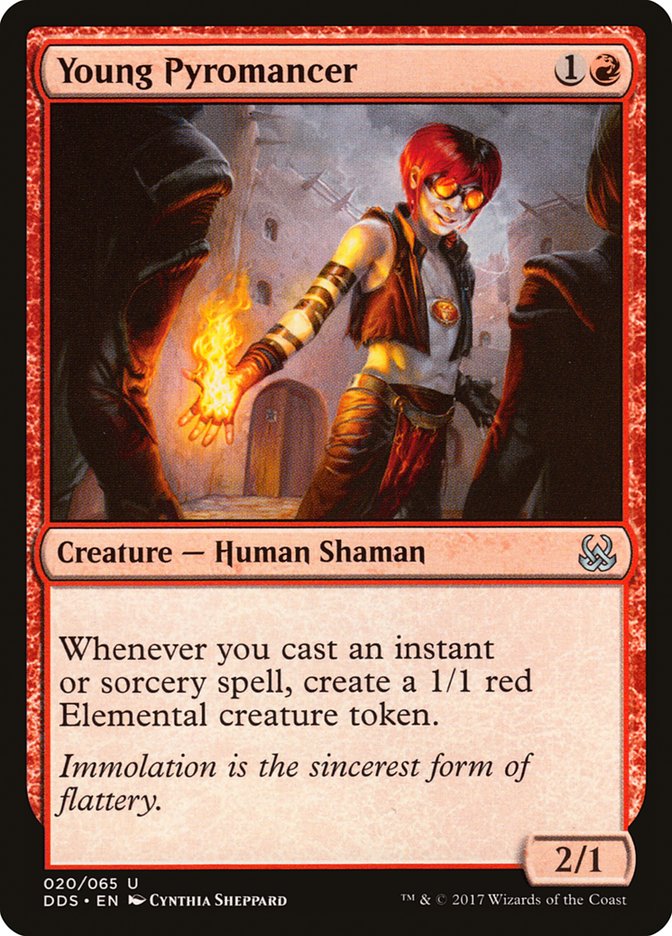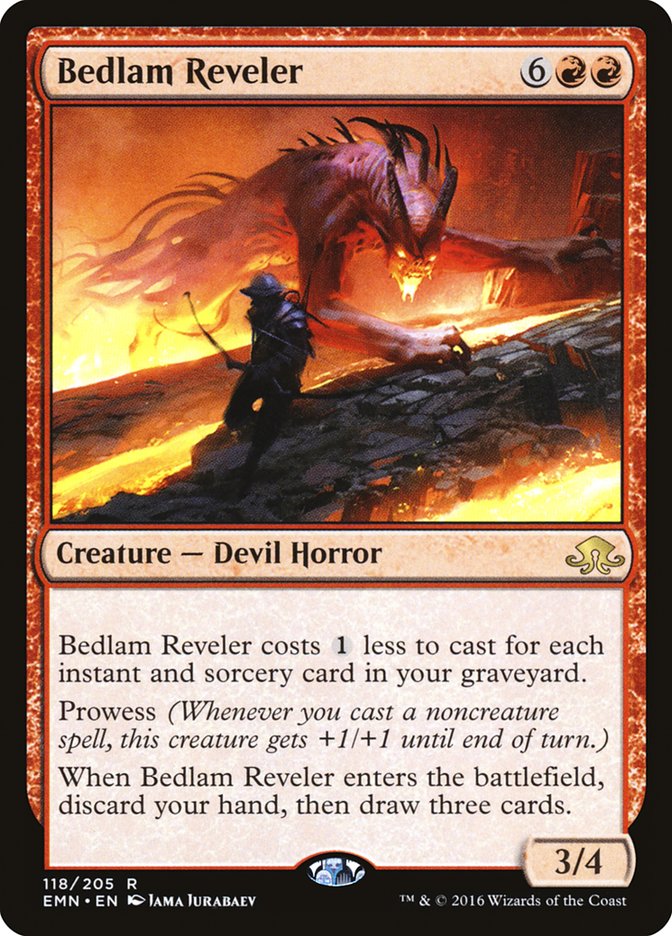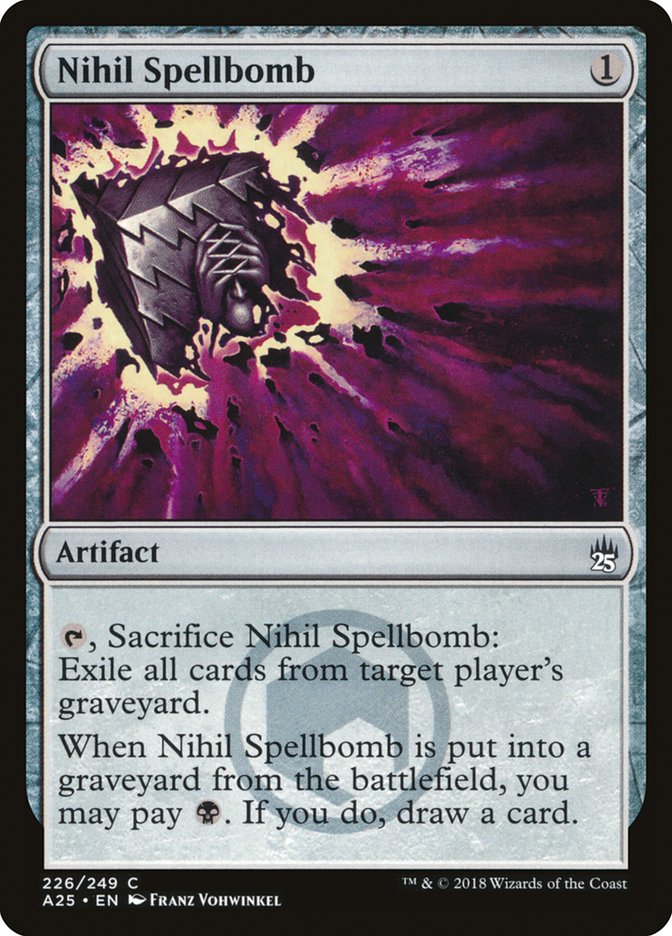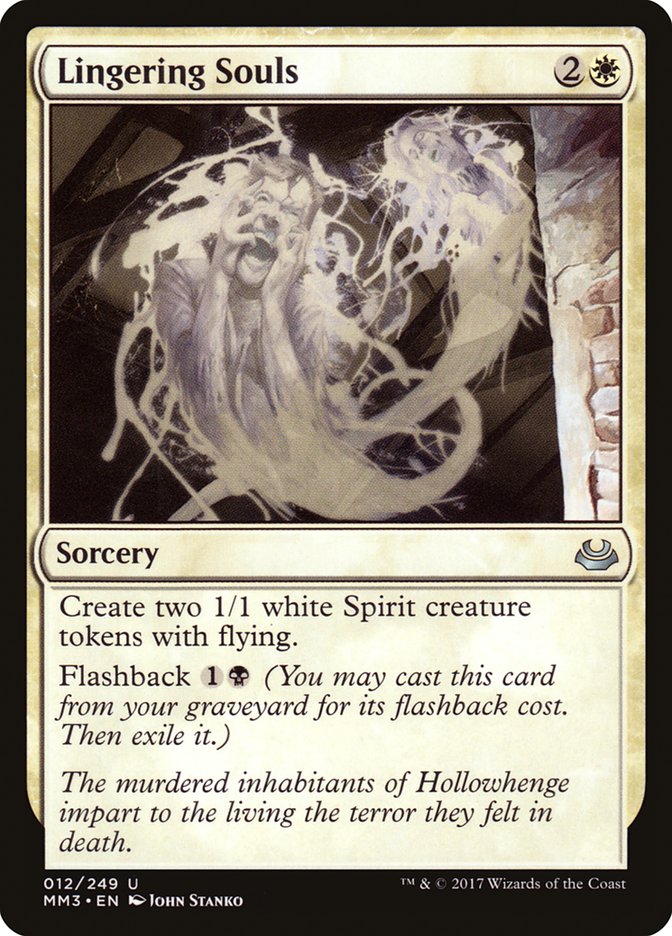It finally happened: Jund won a Modern Open.
Good work, old friend.
I was even in Indianapolis for the occasion, battling Modern with the SCG
Tour’s finest. What was I playing?
Creatures (8)
Planeswalkers (2)
Lands (20)
Spells (30)

That’s right. I, Jundine herself, abandoned Jund on the eve of its
long-awaited triumph. The observant among you might have noticed that the
list above is from the Modern Classic on Sunday, not the Open itself. I
played the same deck in the Open, and the fact that I played the Classic at
all tells you all you need to know about how that went.
Why did I finally decide to play something besides Jund? For starters,
because I had been losing with Jund lately. The last two Modern events I
played before #SCGINDY
were #SCGATL and the #SCGINVI,
neither of which went very well for me. My record in the Modern portion of
the Season One Invitational was something along the lines of 3-5 or 2-6,
completely disastrous.
The worst part was that I didn’t think Jund was a bad deck for either of
those events. Prior to those two bad tournaments, I had an incredible three
tournament run with Jund that left me feeling great about the deck, and
those feelings haven’t abated. The difference was me; I was playing
significantly worse. I had grown too accustomed to playing Jund and was
relying far too much on autopilot, unable to bring the crisp play necessary
for success. I needed a change of pace, to get my thinking off Jund for a
bit before I returned.
Of course, that logic alone wouldn’t have been enough to get me off Jund. I
tell myself all the time that I need a break from a deck, but never go
through with it. The final impetus for my decision was a single card:
I knew Militia Bugler had the potential to change the fundamental dynamics
of Jund’s Humans matchup, and I didn’t have time to figure out how big of a
deal that was going to be. Previously, I had felt that Jund was favored in
the matchup, but only slightly. Worse, I felt it was very likely that the
path to dealing with a Humans deck capable of going toe-to-toe with you off
the top the deck was going to be radically different than the things I was
currently doing with Jund and was worried that my previous Jund list would
find itself a large dog in the matchup. To avoid this risk, and since I
wanted to take a break from Jund anyway, I decided it was time to give
Mardu Pyromancer a whirl.
In retrospect, I think I overreacted to the threat posed by Militia Bugler.
Given Jund’s propensity for grinding its opponents into the dust, it makes
sense at first blush to be worried about the aggro deck gaining a source of
card advantage, but I don’t think that analysis holds up. The secret to the
matchup was always that you were looking to create battlefields where their
creatures with anemic bodies just didn’t matter. When you manage that, the
front half of Bugler is just one more mopey creature you get to invalidate,
and the time they spent deploying it over a real threat is a huge boon to
your plans.
All-in-all, I’m not upset that I took a break from playing Jund on the
weekend it took home the trophy. I needed the break, and Jund got on just
fine without me. The whole ordeal got me thinking though: personal concerns
aside, was this a good weekend to play Mardu Pyromancer over Jund or not?
The results from #SCGINDY
would say no, but there’s enough variance in Magic that I don’t want to
take that at face value.
Besides, even if we do just trust the results blindly, that doesn’t help us
going forward. Mardu Pyromancer and Jund are sibling decks, belonging to
the same family. They naturally have matchup profiles that are very similar
and figuring out which is the better deck to play on a given weekend is no
easy task. So, let’s dive in to the black midrange family of decks and see
if we can develop some heuristics for what to play when you’re in the
market to Thoughtseize your opponent Turn 1 and win on Turn 10.
Global Traits and Weaknesses
Before we take a look at what sets these decks apart from each other, it’s
important to gain some context by making sure we understand why it’s
worthwhile to consider these decks members of the same class. We’re used to
considering Abzan and Jund together in the same breath as the B/G midrange
family, but why is Mardu Pyromancer worth including with them?
All three are midrange decks that rely on the one-mana black discard spells
as their primary form of disruption against the non-interactive decks of
the format. They also all rely on a pile of removal spells to beat the
creature decks, but that’s a less interesting fact. Jeskai also beats the
creature decks in that way, but the dependence on countermagic rather than
discard to beat combo decks keeps Jeskai firmly out of this discussion.
What this reliance means is that the top of the opponent’s deck is the most
troubling zone. It’s a Magic truism that you can’t Thoughtseize the top of
their deck, and nothing in this game will drive that point home as quickly
as playing with one of these decks for a few tournaments. You start by
complaining to your friend that your opponent drew really well, exactly
what they needed after you took their best cards with your discard.
Eventually, you start to realize that them drawing what they needed isn’t
you getting unlucky, it’s you playing Magic.
Thoughtseize doesn’t say “you win the game” on it, despite it often feeling
like it does when you get to sculpt your whole game plan around the cards
in their hand. Your opponents will draw the cards they need
post-Thoughtseize a certain percentage of that time, and that percentage is
way too high for you to rely on it not happening and bemoan getting unlucky
when it does. You need to plan for it to happen and do what you can to
mitigate the risk.
The decks that are the best at drawing out of a Thoughtseize-driven low
resource game are the land-centric strategies. Once a land is on the
battlefield, these black midrange decks have very limited ability to
interact with them. The things the land-based decks seek to do is always
more powerful than what the black midrange decks are doing, and the window
that they can be stopped from doing their thing is alarmingly short. These
decks are the biggest problem for the black midrange decks.
Ironworks and Storm are two more decks where the black midrange decks rely
heavily on Thoughtseize and Inquisition of Kozilek. These decks are not as
good as drawing out of the spots black midrange creates as the land decks,
but it’s still something that they will eventually manage every game. These
matchups tend to be pretty even for all the black midrange decks.
For me, these are the matchups that matter. The creature decks are going to
be different degrees of good for all the different black midrange decks,
and the differences between them isn’t as important. Sure, Mardu Pyromancer
is better against Infect than Jund is, but they’re both quite happy with
the matchup. No, I want my decision on which to play to be based on what
the best solution to the Thoughtseize problem is at the moment.
Mardu Pyromancer: Flexibility and Strength, at a Price
Creatures (8)
Lands (20)
Spells (32)

Mardu Pyromancer has two big advantages over Jund and Abzan. The first is
simple:
One of the pain points of being a midrange deck in a format as diverse as
Modern is that you will, by necessity, end up with a ‘right half’ and a
‘wrong half’ of your deck in nearly every matchup. Against the creature
decks, you want to draw Fatal Push and Lightning Bolt. Against the combo
decks, you want to draw Inquisition of Kozilek, Thoughtseize, and as quick
a clock as you can assemble. You lose games where you look down at your
hand and see a bunch of Thoughtseizes on the draw against Affinity, or a
bunch of Fatal Pushes at literally any point against Tron.
Mardu Pyromancer doesn’t get to avoid this problem. It runs the same
removal spells and the same discard spells as its siblings and can lose
games by drawing the wrong half of its deck just like they do. It loses
less of them though, because Faithless Looting is incredible at fixing this
problem. You get to discard your discard spells when you need removal and
vice-versa. Faithless Looting is the best card in Mardu Pyromancer, and
it’s not particularly close.
A corollary to this idea that Faithless Looting works to fix the classic
problems of midrange is that Mardu Pyromancer gets to play more disruption
than its brethren. Jund and Abzan top out at six discard spells; Mardu
typically plays seven with the full eight being completely reasonable. The
others can’t risk drawing too many when they aren’t good. Mardu can,
knowing it can rely on Faithless Looting to fix its problems. This also
means that Mardu can get away with playing very situational haymaker cards
like Blood Moon, despite them being total blanks in some matchups.
The second advantage comes down to these two cards:
Young Pyromancer and Bedlam Reveler allow Mardu Pyromancer to create
battlefields that are nigh unbeatable. A Young Pyromancer that sticks in
any matchup will quickly create an Elemental army that nothing short of a
sweeper is going to able to answer. Chaining Bedlam Revelers across a few
turns quickly generates so many resources for the Mardu player that no
other deck in the format can keep up. This rapid creation of can’t lose
game states is something that no other black midrange deck can match.
This is true in more matchups than you might think, too. It’s easy to see
how a bunch of Elemental and Spirit tokens would be unbeatable for the
aggro decks, but they are also a huge problem for Tron. Against Jund, no
matter how far behind the Tron deck might be, generally the game will be in
a position where Jund is relying on Tron blanking a few draw steps where
any payoff card will win the game. When Mardu manages to go wide, Karn
Liberated and Wurmcoil Engine are no longer outs that they have. It’s easy
for Mardu to capitalize on Tron stumbling and create a situation where only
Oblivion Stone and Ugin, the Spirit Dragon are outs. If a couple of Bedlam
Revelers were involved, even Ugin doesn’t count.
This idea is why Militia Bugler made me want to play Mardu instead of Jund.
While ahead against Humans with Jund, there’s always the worry that a good
draw step or two from the Humans player will wrest control of the game away
from me. While ahead with Mardu, I know that there’s realistically nothing
that the Humans player can draw short of Izzet Staticaster that can make me
lose this game. When Mardu Pyromancer gets ahead, it gets way
ahead.
The downside to this is that Mardu Pyromancer rarely squeaks across the
finish line. It must create these huge battlefield advantages to
close out the game and doing so takes time. Because of this, Mardu must
lean much harder on cards like Blood Moon and Kambal, Consul of Allocation
that invalidate what the opponent is doing in order to solve the
Thoughtseize problem. Mardu is going to give its opponent plenty of draw
steps before gaining full control on the game, so it must try and make
those draw steps not matter.
The other big issue with Mardu Pyromancer is that it’s vulnerable to
powerful sideboard hate cards in a way that no other member of the black
midrange class is. The power that Mardu derives from Faithless Looting is
based in the graveyard and having that taken away is a big deal. Yes, Mardu
can win games with a Rest in Peace or a Leyline of the Void on the
battlefield, but it sure is much harder.
Jund: A Deck of Hidden Speed
Creatures (14)
Planeswalkers (4)
Lands (25)
Spells (17)

The thing to understand about Jund is that it’s the better Lightning Bolt
deck. Seeing as I’m the one with the microphone right now, that’s how it’s
going to be. There’s good arguments to the contrary floating around out
there; after all, Mardu Pyromancer is chock-full of cards that synergize
nicely with Lightning Bolt. Kill your creature, put a 1/1 Elemental token
onto the battlefield, and give me a Lotus Petal for my eight-mana Ancestral
Recall later on is a nice text box, I’m not arguing that. All I’m
saying is that it’s no match for “remove target player from the game,” and
that’s how Lightning Bolt reads in Jund a surprisingly large amount of the
time.
Jund’s one true advantage over the other decks in its class is its ability
to close out games. It solves the Thoughtseize problem by denying its
opponents the necessary time to recover. In combo matchups, it’s always a
race against the top of their deck. Jund players accept that given enough
time, Ironworks will find the kill and Tron will find a Karn Liberated.
Instead of devoting all their energy to stopping this from happening, they
seek to delay it and then end the game in the interim.
The key to this speed is Tarmogoyf. Four power for two mana is a big deal and lets you end games very quickly when you need to.
Bloodbraid Elf and Raging Ravine have a role to play in the speed of Jund,
but Tarmogoyf is the true hero. Tarmogoyf is the best card in Jund against
every unfair deck, and one of the biggest mistakes new Jund players make is
not valuing it as such. They think their goal is to stop their opponent
from doing their unfair thing and value their hate cards too highly and
their speed too little.
Jund’s other big departure from the other black midrange decks is that it
gets to play Dark Confidant. Confidant is a uniquely powerful card, and one
that gives Jund a lot of extra game against combo decks. Drawing more cards
has a weird way of turbo-charging every aspect of your game: your speed,
your disruption, you name it, extra cards does it.
The rest of the Jund discussion is just an emphasis on the negation of the
Mardu strengths. Aside from Dark Confidant, Jund has no access to card draw
or card selection. It’s at the mercy of its draw steps, and Dark Confidant
doesn’t live nearly often enough to be reliable. Further, Jund is very
rarely far ahead of its opponent. Jund is generally happy when its
advantage is just a single Tarmogoyf, easily handled by the right card off
the top of the opponent’s deck.
For what it’s worth, Jund is also horrifically behind in the head-to-head
with every other deck in the class. Lingering Souls is a tough card to
beat. Luckily, Modern is far too diverse for this to matter much.
Before we move on, let’s take a brief second to talk about Abzan. Abzan
hasn’t seen much play lately, so I don’t want to spend too much time on it,
but the cyclical nature of non-rotating formats means that Abzan will
likely eventually fall into favor once again, and this discussion will be
relevant.
Abzan is, in many ways, the worst of both worlds. It lacks both the
flexibility of Mardu Pyromancer and the speed of Jund. But that’s unfair,
as we’re comparing Abzan to the best attribute of both decks. If we compare
it to the worst attribute of each, we’d see that Abzan is faster than Mardu
Pyromancer and more powerful than Jund.
Abzan is a sort of compromise between the two decks. You don’t get the card
selection that Mardu has access to, but you get the same sort of haymaker
effects with your white sideboard card. Your creature-lands are nowhere
near as good as Jund’s, but you still play Tarmogoyf and that’s most of
Jund’s speed anyway.
Guidelines for Playability
Taking all of this into account, here’s what you should be thinking about
when deciding which of these black midrange decks to play. The first
question to think about is “will graveyard hate be at the forefront of the
format’s mind right now?” If the answer to this question is yes, you should
rule out playing Mardu Pyromancer.
Currently, the answer to that question is no, but it’s getting close. As
Ironworks continues to pick up steam, we may see more players leaning on
global graveyard hate to stop it. Currently Surgical Extraction is rather
popular, and that’s not graveyard hate that Mardu Pyromancer particularly
cares about. When Rest in Peace, Nihil Spellbomb, and Leyline of the Void
become ubiquitous, it’s time to set Mardu aside for a spell.
The new Vengevine decks that are winning a lot on Magic Online are another
thing that might be working to make Modern more hateful to graveyards in
the near future. If you aren’t familiar with these decks yet, you will be
soon. I highly recommend checking out
Collins Mullen’s
upcoming article on the strategy later this week to avoid being surprised
at your next Modern tournament.
The next question to ask is “How good is Lingering Souls right now?” If the
answer is anything worse than great, you shouldn’t be looking at Abzan as
an option. Mardu Pyromancer doesn’t play ‘fair’ Lingering Souls and doesn’t
need the card itself to be good in the format, but Abzan plays only the
fairest of Lingering Souls and is a poor option if the card isn’t
well-positioned.
Lingering Souls is in a good spot when the format is very fair. It’s great
against control and it’s great against creature decks. Modern is not fair right now, and Lingering Souls, as a result, is not very
good. It’s just not a fast enough clock to be worthwhile against any sort
of big mana or combo strategy, and as such I have no interest in playing
Abzan right now.
Next up, “will Dark Confidant both stick and not be a liability an
overwhelmingly high percentage of the time?” If the answer to this is yes,play Jund. When Dark Confidant is well-positioned, Jund is excellent.
As you might have guessed, that’s not the case right now. Dark Confidant is
a liability against a huge swath of matchups, and as a result most of the
successful Jund lists in recent months have gone down to three copies. Dark
Confidant being well-positioned isn’t necessary to play Jund, it just makes
playing Jund a slam-dunk choice.
That’s all the easy questions. Now, we need to consider a more complicated
factor: what’s more diverse, the fair decks or the unfair decks?
If the unfair decks have homogenized around a certain strategy, for example
if Ironworks just becomes far and away the best deck and the format becomes
Ironworks and a bunch of aggressive decks trying to get under it, you want
to play Mardu Pyromancer. Mardu’s solution to the Thoughtseize problem is
to play specific, targeted hate cards that it can consistently find, and
this solution works when there’s a distinct lack of diversity among the
unfair decks.
If the unfair decks are very diverse, Jund is going to be a better option.
Jund’s solution to the Thoughtseize problem is to get the opponent dead as
quickly as possible, and that strategy is equally effective against all the
unfair decks. Disrupt as much as you can with Thoughtseize and Inquisition
of Kozilek, then kill them as quickly as possible and hope that it’s good
enough.
When the fair decks are diverse, Mardu is a better choice. Jund can be
built to beat aggro. Jund can be built to beat other midrange decks. Jund
can be built to beat control. Jund has a really hard time doing
all of that at once. Ever since the printing of Teferi, Hero of Dominaria,
my normal plan of “build like control doesn’t exist and out play them”
hasn’t been working as well. When the fair decks coalesce on any two of
these three kinds of fair decks, Jund works well.
Right now, I think the unfair decks are very diverse and the fair decks are
becoming reasonably homogenous. Aggro is way out in front right now for the
fair decks, and I expect to play against Humans, Infect, and Affinity far
more often than Jeskai Control. That’s good news for Jund.
So, in the end, yes, I think Jund was the better deck for last weekend
after all.
Now I know.


